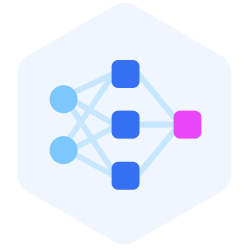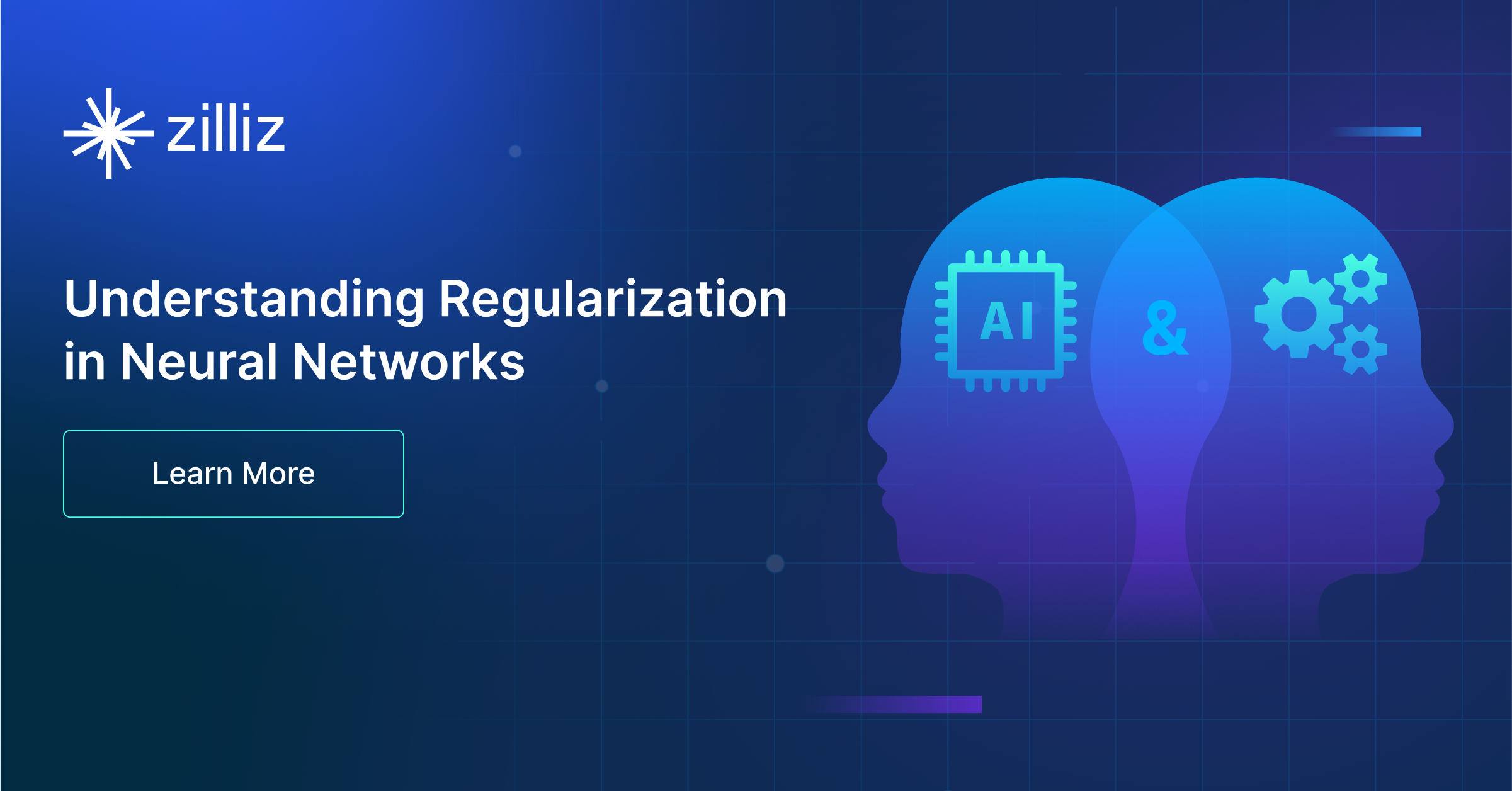The Curse of Dimensionality in Machine Learning

The Curse of Dimensionality in Machine Learning
Machine learning (ML) is like teaching a computer to make decisions or predictions based on examples. Imagine you're teaching a friend to identify different types of fruits. The more characteristics (like color, shape, size) you use to describe each fruit, the more examples your friend might need to learn accurately.
The "curse of dimensionality" is a challenge in machine learning that occurs when we have too many characteristics (or "dimensions") to consider. Here's why it's tricky:
More data needed: As we add more characteristics, we need many more examples to cover all possible combinations. This can quickly become overwhelming.
Performance peak: At first, adding more characteristics helps the computer make better predictions. But after a certain point, it actually starts performing worse.
Confusing similarities: With too many characteristics, everything starts looking similar to the computer, making it harder to tell things apart.
Resource intensive: More characteristics mean more calculations, which requires more computing power and time.
To address this, researchers use techniques to reduce the number of characteristics while keeping the most important information. They also develop smarter ways for computers to learn that can handle many characteristics more efficiently.
In some cases, having more characteristics can be helpful, especially with advanced learning methods. But generally, finding the right balance of characteristics is key to creating effective ML systems.
 Curse of Dimensionality
Curse of Dimensionality
What is the Curse of Dimensionality?
The curse of dimensionality, a term introduced by mathematician Richard E. Bellman, describes a set of challenges that emerge when working with data in high-dimensional spaces. This phenomenon manifests as a rapid decline in the efficiency and effectiveness of algorithms as the number of dimensions in the data grows exponentially. In these high-dimensional environments, data points tend to become increasingly sparse, which makes it difficult to identify meaningful patterns or relationships within the dataset.
One of the key aspects of this curse is that as the number of features or dimensions in a dataset increases, the amount of data required to make statistically sound predictions grows at an exponential rate. This relationship between dimensionality and data requirements can quickly become overwhelming, even for powerful computing systems. Consequently, the curse of dimensionality typically leads to a significant increase in the computational resources and processing time needed for data analysis and model training.
This concept is particularly relevant in machine learning (ML), where we often encounter high-dimensional data. For instance, when analyzing customer behavior, we might track dozens of metrics for each individual. In image processing, even a modest 50x50 pixel grayscale image represents a 2,500-dimensional space, above example and this jumps to 7,500 dimensions for an RGB color image of the same size. Understanding and addressing the curse of dimensionality is crucial for developing effective machine learning solutions that can handle these complex, high-dimensional datasets.
Characteristics of High-Dimensional Data
High-dimensional data exhibits distinct characteristics that set it apart from more traditional datasets. The most prominent feature is the sheer number of attributes or features associated with each data point. In these datasets, the number of features (typically denoted as p) significantly outweighs the number of observations or samples (usually represented as N). This relationship is often expressed mathematically as p >> N, indicating that p is much greater than N.
Such data structures commonly arise in various fields and applications. For instance, they may result from recording numerous metrics about a single event or entity, where each metric becomes a dimension in the dataset. Another common source of high-dimensional data is image analysis, where each pixel in an image represents a separate dimension. In the case of high-resolution or color images, the number of dimensions can quickly escalate into the thousands or even millions.
The high dimensionality of these datasets presents unique challenges and opportunities in data analysis and machine learning, fundamentally altering how we approach problems of pattern recognition data visualization, classification, and prediction.
Key Aspects of the Curse of Dimensionality
The curse of dimensionality manifests in several ways, each presenting unique challenges for data analysis and ML. Understanding these key aspects is crucial for developing effective strategies to mitigate their impact:
Data Sparsity: As dimensions increase, data points become sparse, making it harder to find patterns.
Distance Concentration: In high dimensions, the difference between the nearest and farthest neighbors becomes less significant.
Computational Complexity: More dimensions require more computational resources and longer training times.
Overfitting: Models are more prone to overfitting in high-dimensional spaces.
Visualization Challenges: It becomes difficult to visualize and interpret data beyond three dimensions.
Spurious Correlations: High-dimensional data can lead to false correlations that don't exist in reality.
Hughes Phenomenon: As the number of features increases, the classifier's performance improves until reaching an optimal number of features. Adding more features based on the same training set size will then degrade the classifier's performance.
The Curse of Dimensionality in Distance Functions
The curse of dimensionality has profound effects on distance measurements, which are fundamental to many ML algorithms. As the number of dimensions in a dataset increases, several interrelated phenomena occur, each contributing to the challenges of high-dimensional data analysis:
The Euclidean distance between vectors grows as dimensions are added, leading to a phenomenon known as distance concentration. This means that in high-dimensional spaces, the relative difference between the nearest and farthest points becomes negligible, making it difficult for algorithms to distinguish between close and distant data points. Simultaneously, the feature space becomes increasingly sparse, with data points spread thin across the vast multidimensional space. This sparsity necessitates a significant increase in the number of observations required to maintain the average distance between data points, often making it impractical to gather sufficient data for comprehensive coverage of the feature space.
These distance-related issues have a direct impact on supervised learning tasks. As the dimensionality increases, it becomes less likely that new samples will closely resemble the training data in all dimensions. Consequently, predictions for these new samples are less likely to be based on truly similar training features, potentially reducing the accuracy and reliability of the model. This challenge underscores the importance of careful feature selection and dimensionality reduction techniques in high-dimensional ML tasks.
How the Curse of Dimensionality Affects Machine Learning
The curse of dimensionality has far-reaching implications across various ML algorithms and tasks, often degrading performance and complicating analysis. Here are some specific ways it impacts different aspects of machine learning:
Clustering Algorithms: Performance degrades as it becomes harder to define meaningful clusters.
Classification Tasks: Classifiers struggle to create clear decision boundaries.
Regression Models: Prediction accuracy may decrease due to increased noise from irrelevant features.
Nearest Neighbor** Methods**: These become less effective as the concept of "nearest" loses meaning in high dimensions. K-Nearest Neighbors (KNN) is particularly susceptible to overfitting due to the curse of dimensionality.
Distance-Based Algorithms: Methods using Euclidean distance for classification and clustering face particular challenges.
Generalization: The curse of dimensionality can hinder an algorithm's ability to generalize well to unseen data.
Strategies to Address the Curse of Dimensionality
While the curse of dimensionality presents significant challenges in several machine learning models, several strategies have been developed to mitigate its effects. These approaches aim to reduce the dimensionality of the data while preserving its essential characteristics, or to make algorithms more robust to high-dimensional spaces. By employing these techniques, data scientists and ML engineers can improve model performance, reduce computational complexity, and enhance the interpretability of their results.
Here are some key strategies to combat the curse of dimensionality:
Feature Selection: This approach involves choosing the most relevant features for your model, effectively reducing the dimensionality of the input space. By focusing on the most informative attributes, you can improve model performance and reduce overfitting. Common techniques include:
Low variance filter
High correlation filter
Multicollinearity analysis
Feature ranking
Feature Extraction: Instead of selecting existing features, this method creates new features that capture the essence of your data more efficiently. By transforming the original high-dimensional space into a lower-dimensional representation, you can retain most of the important information while reducing the number of features. Popular techniques include:
Principal Component Analysis (PCA)
t-distributed Stochastic Neighbor Embedding (t-SNE)
Dimensionality Reduction Techniques: These methods aim to find a lower-dimensional representation of the data that preserves its key characteristics. They can be linear or non-linear and are often used as a preprocessing step before applying ML algorithms. Examples include:
Linear Discriminant Analysis (LDA)
Autoencoders
Regularization: This technique helps prevent overfitting by adding a penalty term to the loss function, discouraging the model from relying too heavily on any single feature. Common forms include L1 (Lasso) and L2 (Ridge) regularization.
Increase Training Data: While not always feasible, increasing the amount of training data can help mitigate the curse of dimensionality by providing more examples to learn from, potentially filling in sparse regions of the feature space.
Data Preprocessing: Proper preprocessing can help alleviate some effects of high dimensionality:
Normalization: Scaling features prevents certain attributes from dominating others due to differences in magnitude.
Handling Missing Values: Addressing missing data through imputation or deletion can improve the quality of high-dimensional datasets.
By combining these strategies and tailoring them to your specific problem and dataset, you can significantly reduce the impact of the curse of dimensionality on your ML projects. It's important to note that there's no one-size-fits-all solution, and experimentation is often necessary to find the best approach for your particular data science use case.
 Understanding Regularization in Neural Networks.png
You can learn more about how to prevent overfitting with Regularization
Understanding Regularization in Neural Networks.png
You can learn more about how to prevent overfitting with Regularization
Balancing Overfitting and Underfitting
In the context of the curse of dimensionality, finding the right balance between model complexity and simplicity is crucial. This balance is often referred to as the bias-variance tradeoff, and it's central to creating effective ML models.
On one hand, we're guided by the principle of Occam's Razor, which suggests that simpler explanations (or in our case, models with fewer parameters) are generally preferable. This approach helps avoid overfitting, where a model becomes too complex and starts to "memorize" the training data rather than learning generalizable patterns.
However, we must also heed Einstein's wisdom: "Everything should be made as simple as possible, but not simpler." This caution reminds us of the danger of underfitting, which occurs when a model is too simple to capture the underlying patterns in the training samples of data. An underfit model will perform poorly on both the training data and new, unseen data.
The key is to find the sweet spot between these two extremes. This often involves careful feature selection, regularization techniques, and iterative model refinement based on performance metrics.
Deep Learning and the Curse of Dimensionality
Deep learning models have shown a remarkable ability to handle high-dimensional data, often seeming to sidestep some of the worst effects of the curse of dimensionality. This capability stems from several key characteristics of deep neural networks:
Automatic Feature Extraction: Deep neural networks can uncover underlying patterns by iteratively giving more importance to relevant features. This hierarchical learning process allows them to create increasingly abstract representations of the data, effectively performing dimensionality reduction as part of the learning process.
Locality and Symmetry: These concepts help break the curse by reducing the number of configurations the network needs to learn. Convolutional neural networks, for instance, exploit spatial locality and symmetry in image data, allowing them to learn efficiently even from high-dimensional inputs.
High Parameter Count: Counterintuitively, despite having millions of parameters, deep learning models can still learn effectively from high-dimensional input. This is partly due to their ability to learn hierarchical representations and partly due to techniques like dropout and regularization that prevent overfitting.
These characteristics allow deep learning models to perform well on tasks that were once thought to be intractable due to the curse of dimensionality, such as image and speech recognition, natural language processing, and complex game playing.
Practical Considerations
When working with high-dimensional data, several practical considerations can help you navigate the challenges posed by the curse of dimensionality:
Start with exploratory data analysis to understand your features. This can reveal correlations, distributions, and potential issues in your data that may inform your modeling approach.
Use domain knowledge to guide feature selection. Expert insight can often identify the most relevant features, reducing dimensionality in a meaningful way.
Consider the trade-off between model complexity and generalization. More complex models may capture more nuanced patterns but are also more prone to overfitting.
Regularly validate your model's performance on unseen data. This helps ensure that your model is generalizing well and not just memorizing the training data.
Implement careful model design to avoid overfitting and improve algorithm performance. This might involve regularization techniques, ensemble methods, or architectural choices specific to your problem domain.
Evaluate methods on previously unseen data to ensure generalization power. A model that performs well on a held-out test set is more likely to perform well in real-world applications.
By keeping these considerations in mind, you can develop more robust and effective models, even when working with high-dimensional data. Remember that addressing the curse of dimensionality is often an iterative process, requiring experimentation and refinement to achieve optimal results.
Conclusion
The curse of dimensionality is a fundamental challenge in ML. It leads to increased computational complexity, overfitting, and spurious correlations. While deep learning models have shown promise in overcoming some of its effects, it remains a crucial consideration when developing effective ML solutions. Understanding and addressing this phenomenon through techniques like dimensionality reduction, feature selection, and careful model design is essential for creating robust, generalizable models in high-dimensional spaces and unlocking the potential of complex datasets.
Additional Information
While the curse of dimensionality presents challenges, it's worth noting that ML excels at analyzing data with many dimensions, often finding patterns that humans can't easily discern across interrelated dimensions. This ability to handle high-dimensional data is part of what makes machine learning so powerful, despite the computational challenges involved.
- What is the Curse of Dimensionality?
- Characteristics of High-Dimensional Data
- Key Aspects of the Curse of Dimensionality
- The Curse of Dimensionality in Distance Functions
- How the Curse of Dimensionality Affects Machine Learning
- Strategies to Address the Curse of Dimensionality
- Balancing Overfitting and Underfitting
- Deep Learning and the Curse of Dimensionality
- Practical Considerations
- Conclusion
- Additional Information
Content
Start Free, Scale Easily
Try the fully-managed vector database built for your GenAI applications.
Try Zilliz Cloud for Free